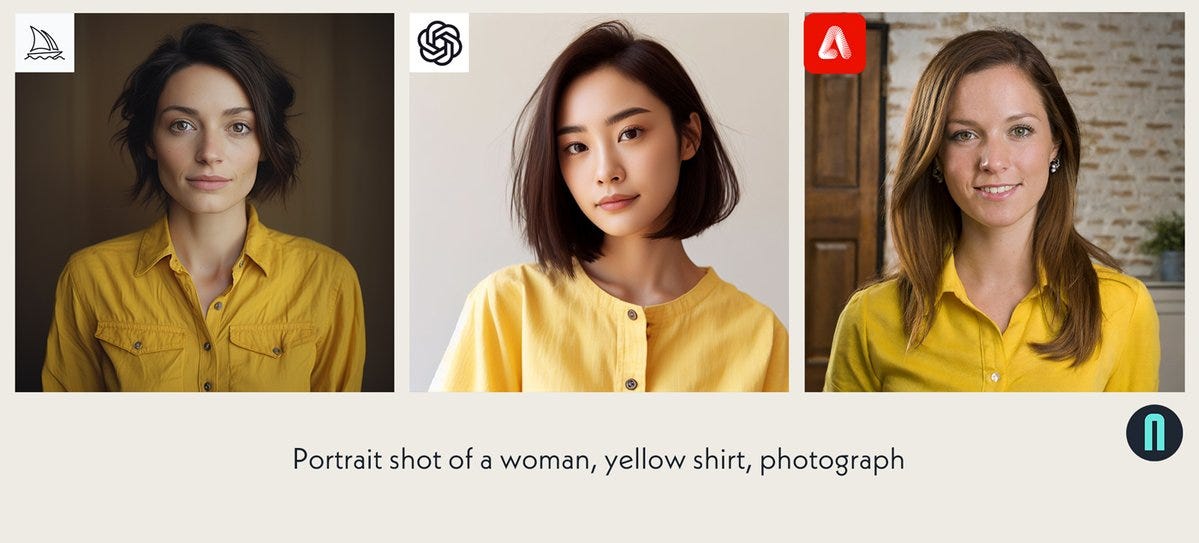It continues to be clear that LLM AI and Generative AI applications for now are more useful in their ‘Narrow’ incarnations, as opposed to ‘Wide’ and more general. The AI industry has long called this ANI vs AGI, or artificial narrow intelligence va artificial general intelligence.
This is an additional AI ‘Polarity’ beyond ‘Big vs Small AI’, and ‘Open vs Close’ AI that I’ve discussed to date in these early days of the AI Tech Wave. As in those polarities, the AI industry is focused on both narrow and wide/general. And in all of them we are in the earliest of stages.
We can view it as the ‘Crawl’ stage of the ‘crawl, walk, run’ sequence of growing up.
Yesterday, I talked about some of the issues around AI apps and services being not as reliable as we need them, with a lot of work ahead to making the underlying models ‘Interpretable’, meaning understanding their inner workings, and ‘Explainable’, meaning providing key sources on final answers to users.
Note that this is long before what OpenAI Founder and CEO and others have been aspiring to in the form of ‘Artificial General Intelligence’, (aka AGI) or ‘Superintelligence’. Depending on which expert is asked, that could be a few months to a few years, if not decades away. Yours truly for now is on the latter end of that spectrum (a currently Strong View, Weakly Held). Meaning that it’ll take longer than likely expected for AI to go from ‘narrow’ to ‘wide’, or ‘General’ AI in the tech vocabulary. Subject to change of course depending on what we see ahead in terms of next generation Foundation (aka Frontier) LLM AI models and AI GPU hardware bring, just in the next three years or more.
What brings this up now are the latest reports of general or ‘wide’ AI Chatbots not being as useful as expected to date in their General versions. Axios makes this point after collating data and feedback from a range of sources:
“Instead of viewing AI as a wholesale substitute for human workers and tasks, smart organizations and products are putting it to work in narrower niches.”
“Why it matters: AI is still far from being able to take over soup-to-nuts projects like writing entire articles or performing whole movie roles, but it can effectively shoulder painful but necessary tasks that people find tough or tedious.”
"These tools are incredibly powerful, and they can do a lot of things, but they cannot do everything," Microsoft vice president Eric Boyd told Axios.
“Stanford professor Erik Brynjolfsson said in January that he and his colleagues broke out the tasks required in 950 occupations. AI could handle many of the functions, but not all: ‘We did not find a single one where machine learning ran the table and could do all of them.’”
Separately, Bloomberg’s piece here “Even Google Insiders are questioning Bard AI Chatbot’s Usefulness”, is a case in point on the ‘General AI’ front:
“For months, Alphabet Inc.’s Google and Discord Inc. have run an invitation-only chat for heavy users of Bard, Google’s artificial intelligence-powered chatbot. Google product managers, designers and engineers are using the forum to openly debate the AI tool's effectiveness and utility, with some questioning whether the enormous resources going into development are worth it.”
“My rule of thumb is not to trust LLM output unless I can independently verify it,” Dominik Rabiej, a senior product manager for Bard, wrote in the Discord chat in July, referring to large language models — the AI systems trained on massive amounts of text that form the building blocks of chatbots like Bard and OpenAI Inc.’s ChatGPT. “Would love to get it to a point that you can, but it isn’t there yet.”
“‘The biggest challenge I’m still thinking of: what are LLMs truly useful for, in terms of helpfulness?” said Googler Cathy Pearl, a user experience lead for Bard, in August. “Like really making a difference. TBD!’”
Of course the piece doesn’t focus on Google’s upcoming Gemini LLM AI, which is reputedly as good as if not better than OpenAI’s market-leading GPT4 and ChatGPT based on it. The whole article above is worth reading and illustrates that we’re in the earliest of stages in terms of reliability, explainability and interpretability of general AI technologies. I went through the importance of that ‘AI troika’ yesterday.
But the focus on ‘Narrow’ AI applications is a different matter, particularly in terms of relatively more reliable AI results, that can truly help ‘Augment’ human users in their tasks. A good exhibit on the business side here are AIs specialized for Coding, used by over a million software developers already. CoPilot for Github is an business focus area for Microsoft, despite the pricing and cost dynamics for now that I discussed in my post just a few days ago.
We’re going to see a lot more narrow AI applications and services, for both consumers and businesses.
An obvious hit on narrow AI on the consumer side is of course TikTok’s ‘ForYou’ machine learning Feed algorithms that have resulted in over a billion users worldwide now spending upwards of an hour or more on the service scrolling through content that is going beyond just Entertainment.
Of course Meta with Reels, YouTube with Shorts and many others are similarly seeing success with their own narrow AI versions already. Meta is already booking over $10 billion in revenues this year on their Reels monetization. An example of the Financial cycle correlating with the Secular cycle for a change.
On the consumer side, I would highlight the narrow ‘Smart Agent’ chatbots seeing early success for companies like Character.AI, and perhaps soon for Snap and Meta as they roll out their versions.
Narrow AI augmentation and summaries for Search results by Google and Microsoft Bing/OpenAI is another example of the ‘narrow’ application for AI. Although in that case, the companies have to expend additional care on making sure the results are accurate and reliable, as determined by the traditional software driven Search part of their infrastructure.
Another example of successful narrow AI are image generating apps and services from companies like Midjourney, OpenAI with Dalle-3, Adobe with Firefly and others. This is a an area where there are no ‘right’ or acurate answers to a user’s prompts, so an AI can be open-ended with its ‘creativity. Check out this recent comparison of the three services (Midjourney, OpenAI Dalle-3 and Adobe Firefly) to single user prompts.
All the results are ‘right’ and have their own appeal. Check out the other sets of results to the user prompts.
Same thing will happen with narrow video generation apps from Runway and others. And of course the multimodal capabilities coming with Voice and translation services. OpenAI’s ChatGPT from OpenAI is rolling out a set of these narrow capabilities rolled into the app. Another example of effective narrow AI of course is the computational photography AI/ML being rolled out by Google, Apple and others.
We’re also seeing and will see a lot more narrow AI applications on the business side of the ledger. Key examples of course are using AI to go beyond spell checking to help summarize emails, documents, web pages, and of course generate short documents for email response, marketing, and other productivity applications.
AI being used narrowly for summarizing meetings and generating notes and reports are another example, also an area I’ve discussed before. And as noted, it’s an area that is going to need a lot more work and innovation to meet its potential in terms of augmenting and leveraging ‘Knowledge Workers’. Other narrow AI applications are of course showing up in Healthcare, Education and other industries.
The general (or wide) AI part will of course get better with time. As Axios notes:
“Yes, but: Even where AI is only capable of playing a supporting role today, the rapid pace of improvement suggests the technology might be ready to play a bigger part sooner than later.”
But we’re at the crawl stage of AI at the moment. A while to go before we walk and run. We’ll get there soon enough. So we stay lean and narrow for now, as we get it more right on wider, general AI. Steady as it goes. Stay tuned.
(NOTE: The discussions here are for information purposes only, and not meant as investment advice at any time. Thanks for joining us here)









